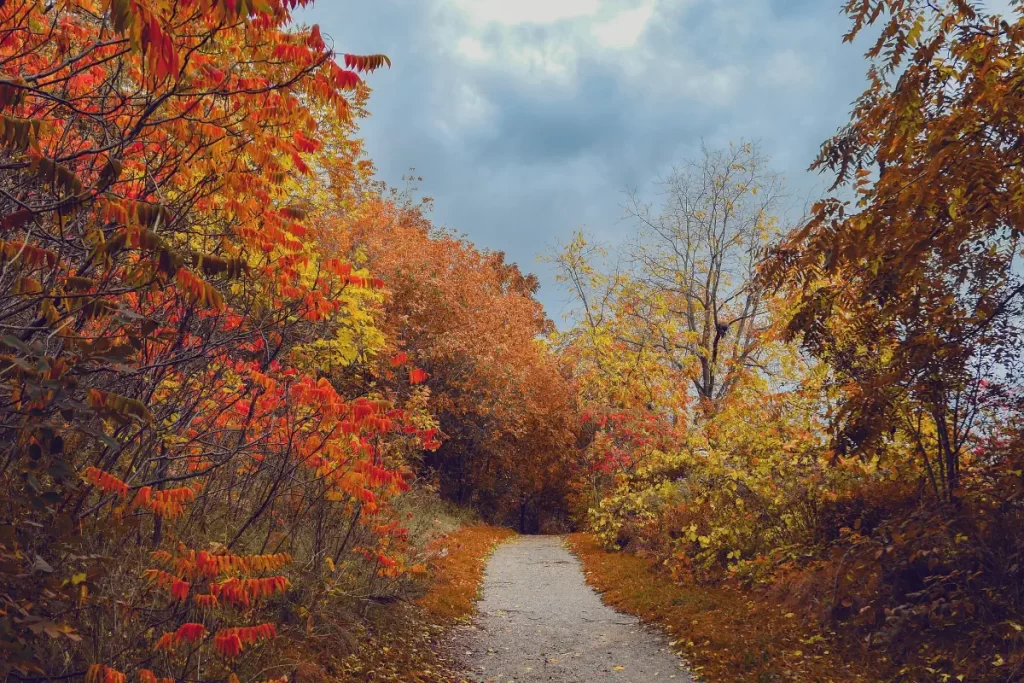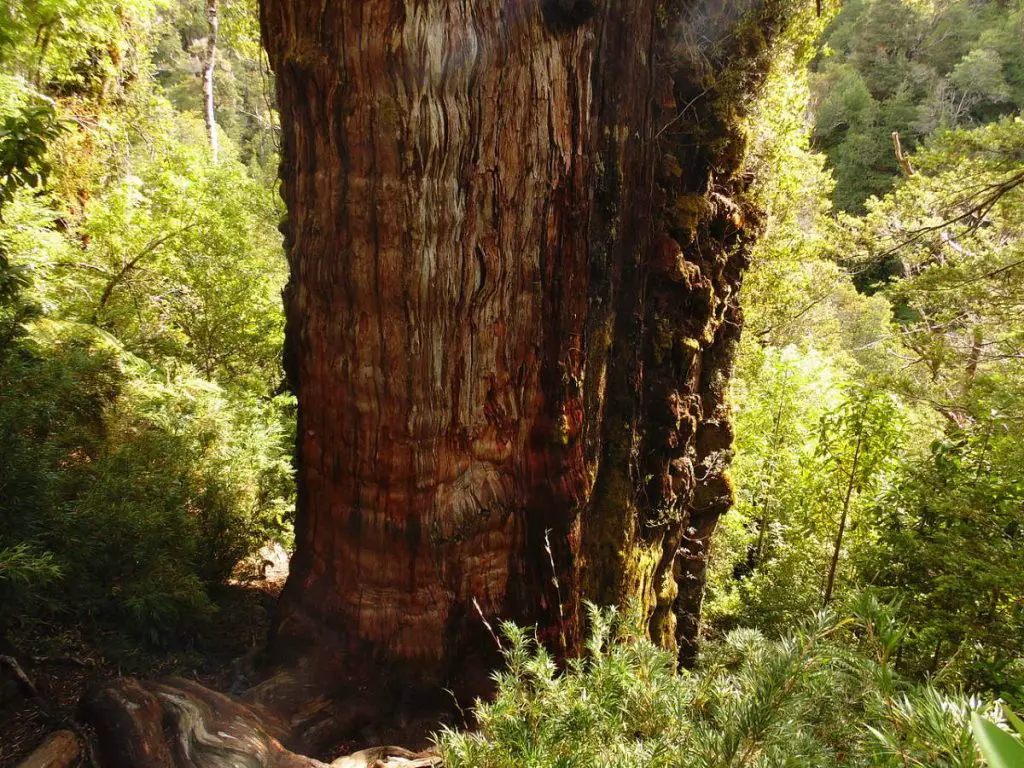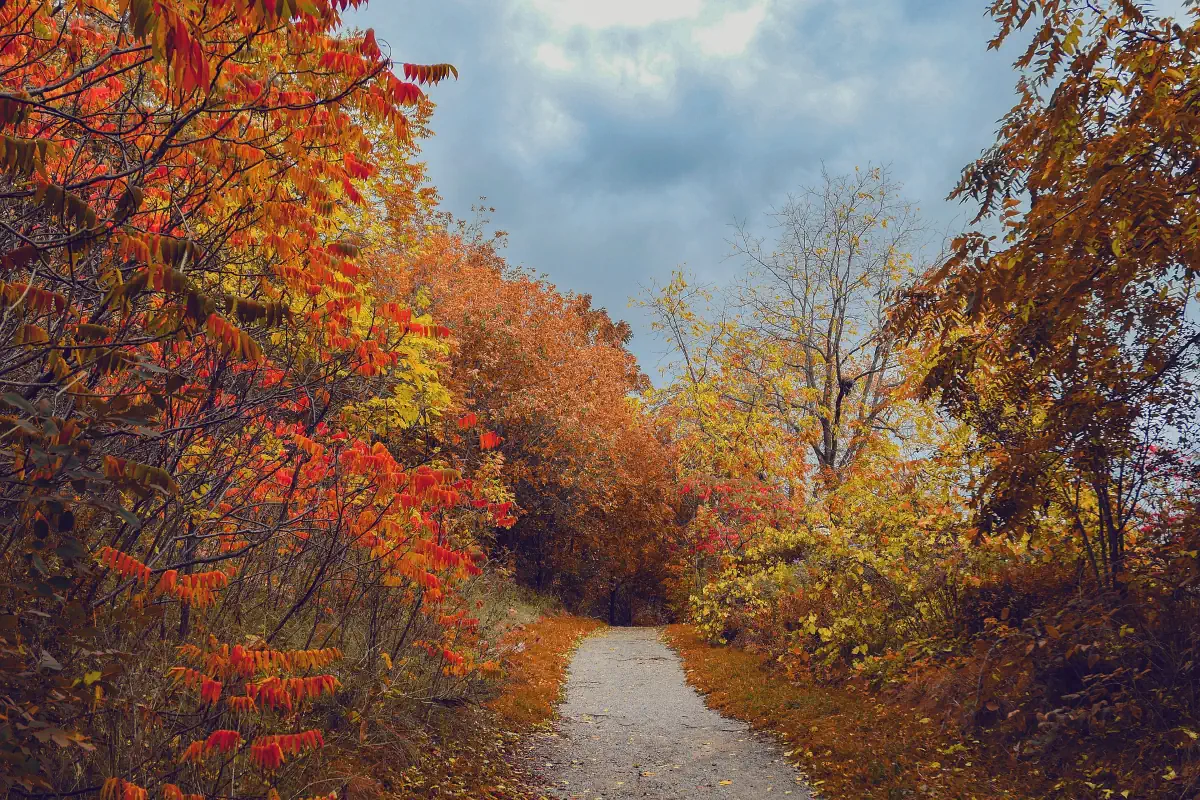Plants are green because their cells contain chlorophyll (a green pigment, see notes 1) inside little structures called chloroplasts. Chlorophyll is green because it absorbs other wavelengths of light, but reflects the wavelength that we see as green. That’s why most plants are green, including trees and grass. Those wavelengths that the chlorophyll is absorbing? That’s energy! Cyanobacteria, plants, and algae use this energy can later be released to fuel the organism’s activities This process is called photosynthesis. But, why do leaves change color in the fall?
Light is a wave, but it’s a wave of particles-photons (see notes 2). These photons bonk into the chlorophyll, exciting electrons in the pigment. This creates a higher energy state in the pigment, which the chloroplast can use (through some very cool molecular machinery) to put together a molecule called ATP.
The plant needs the energy from the sun + nutrients + water to make ATP, the energy molecule all living things need for our cellular processes. The plant can then use the ATP to do lots of things, including making organic molecules (sugars),-ta-da, tasty food.
This process is called photosynthesis.
Sounds like photosynthesis is great! So, why do plants give it up and change color in the fall?
Photosynthesis means free food for plants. So, why do they give it up and get rid of their precious leaves?
But when it gets cold in the autumn and winter, the days also get shorter, and there is less sunlight. That means less energy for the plants. Some plants respond to this by changing their production of chlorophyll-they break it down and pull it out of their leaves to save energy. Chlorophyll takes a lot of energy to make, so it’s more energy efficient for the tree to pull back and wait until spring when there’s more warmth and sunshine to put a lot of resources into making that chlorophyll again.
Without the green pigment, the leaves on a tree are left with only their carotenoids and anthocyanins-those are yellow, orange, red, pink, purple, and brown pigments that make up the hues we see in autumn leaves!
But, these autumn colors mean that these leaves aren’t doing their job anymore. So, the tree stops feeding it, and it dies and eventually falls to the ground or blows away in a gust of wind.

Evergreen trees
But, there’re also evergreen trees (conifers), like pines. Instead of broad leaves, evergreen trees have thin, waxy needles.
This special needle shape, along with a waxy coating, enables evergreen trees to conserve water (which is essential for the photosynthetic process to continue) during the whole year, both summer and winter.
So, unlike their deciduous counterparts, conifers’ needles don’t change colors and aren’t shed annually, but only every few years.
Notes
- Chlorophyll is an essential pigment, plase use it in photosynthesis, allowing them to absorb energy from light. Chlorophylls absorb light most strongly in the blue and red portions of the electromagnetic spectrum, while poorly absorbing the green and near-green portions. In other words, it simply reflects the green portion of the light. That’s why it is green in color.
- Wave-particle duality is a concept in quantum mechanics. It suggests that every particle or quantum entity (i. e. light) may be described as either a particle or a wave. It expresses the inability of the classical concepts “particle” or “wave” to fully describe the behavior of quantum-scale objects (the scale of atoms and subatomic particles).

Related: Oldest Trees in the World
Sources
- Chlorophyll on Wikipedia
- Photosynthesis on Wikipedia
- Wave-particle duality on Wikipedia
- Why do leaves change color? on the NOAA Scijinks website
- “A Closer Look at Fall Foliage” on the Smithsonian Science Education Center website
- The Largest Elephant Ever Recorded : Henry - October 13, 2024
- All Moons in Our Solar System [2024 Update] - September 17, 2024
- Budget of NASA, Year by Year [1980-1989] - June 10, 2024
